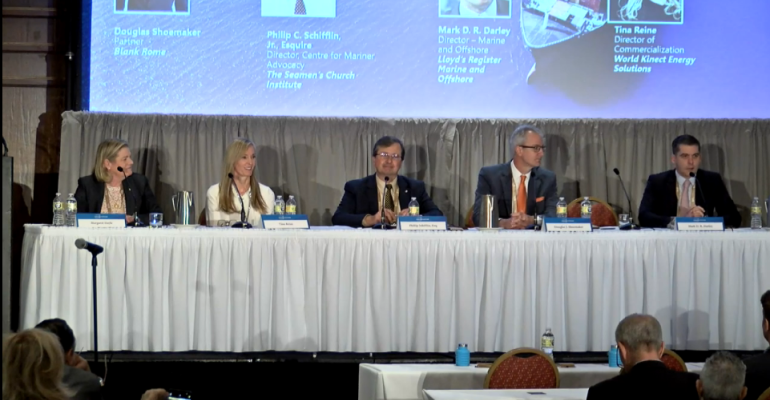Speaking at CMA Shipping 2022 on the panel “Renewable Energy – The Dream vs the Reality”, BlankRome partner, Douglas Shoemaker, said:
“I'm seeing investors who want to invest in a [fuel] concept, I see shipowners who want to enter into construction agreements, and then I see a charter party that's going to potentially fund that new construction, and then an end customer and then an end beneficiary of the movement of whatever is going to be on board that vessel. How do you explain and set out all of the different risks that are there when you don't know what the regulatory framework is?”
Shoemaker said that trials of alternative fuels are generally suited to shortsea routes, and in the US that generally means running afoul of a further significant regulatory hurdle: the Jones Act.
The call for uniformity in US maritime law is a buzzword, said Shoemaker, and that poses a challenge within the US and its various jurisdictions. What the industry really needs is international uniformity of rules, he added.
“The legal issue we see is the complexity of how this regulatory framework is going to come to pass. I'm quite heartened by the things I'm hearing here and also by some of our clients, I am aware of some projects that they've already got angel investors that are funding the initial work. But I also have to throw a wet towel out there to say, there is going to be a long tail on fossil fuels.”
Mark Darley, Director, Marine and Offshore, Lloyd’s Register Marine & Offshore, reflected on the changes he had seen since last attending CMA Shipping in 2018, particularly the industry dealing with Emission Control Areas (ECAs).
“If you remember at the start of 2020 the industry had two options: you could either fit a scrubber or not fit a scrubber. Remember all the conversation, the money, the deliberation that went into those two options? Here we are now talking about decarbonisation, where we've got a myriad of 16 different fuels, different shipping segments, different geographic trades, and really the industry is struggling with that,” said Darley.
Part of the industry’s difficulty in adjusting is down to a change in approach to regulation, said Darley. Historically, the maritime industry is used to being told what to do, but the issues under discussion now are goal- and risk-based.
“There's a lot of momentum developing, not just within shipping, but across the whole world to awaken across the whole supply chain because that's what's needed. If you look at the $2 trillion that is needed to decarbonize maritime, 85% of that investment is not needed on the ship and technology. It's needed on the infrastructure. It's needed on the crew, it's needed on the training, it's needed in other tertiary industries,” said Darley.
Philip C. Schifflin, Jr., Esquire, Director, Center for Mariner Advocacy, The Seamen's Church Institute said that the changes to operations onboard cannot burden seafarers further.
“As we look at moving to different types of fuel sources and renewables, there are lots of technical challenges that need to be accomplished. But what we can't do is make it more difficult for seafarers or unrealistic for seafarers, or not provide adequate training for seafarers.
“If we do that, we increase the risk, we put more burden on the seafarers and for anybody that's followed the plight of seafarers for the last couple of years, what we don't need to do is add additional burdens on seafarers,” said Schifflin.
Copyright © 2024. All rights reserved. Seatrade, a trading name of Informa Markets (UK) Limited.
Add Seatrade Maritime News to your Google News feed.  |

